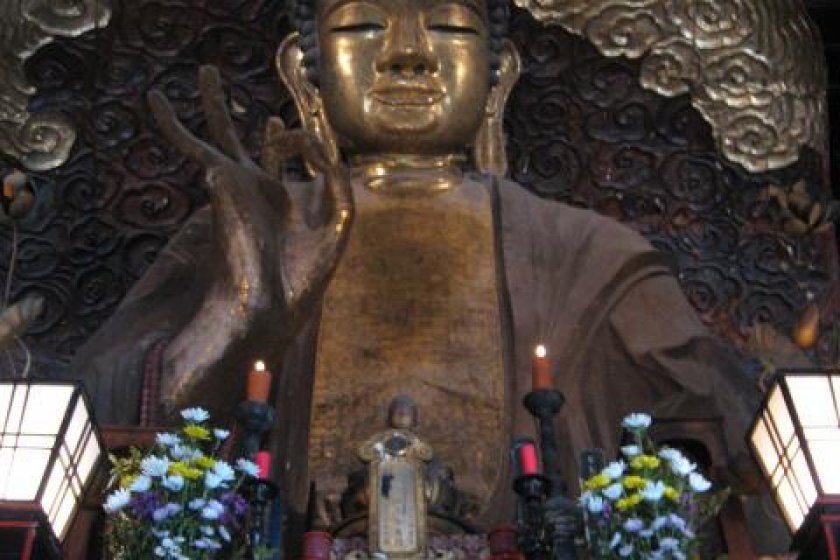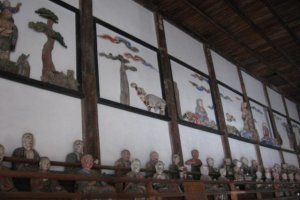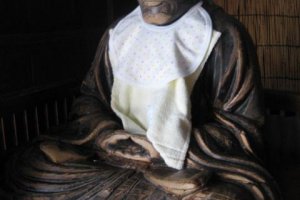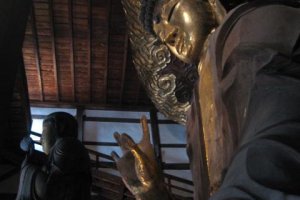There is a giant hiding in Gifu City. Housed in an unassuming temple near Gifu Park resides The Great Buddha of Gifu. I was told it was the third largest statue of Buddha in Japan, but after doing some research I think the person meant third best representation of Buddha. But either way “third” didn’t sound very impressive to me. “What’s so great about that?” I thought. (What a horrible attitude. That’s like saying, “So-and-so only won a bronze medal in The Olympics.”) Anyway, as soon as I walked through the entrance of Shohou Temple, “Sugoi (Wow!).” passed through my lips. I would hear that several times from the other visitors as they entered the hall. It’s huge and gold.
The Great Buddha of Gifu has been around for almost 200 years. Perhaps it was Buddha’s divine power that allowed it to survive the air raids of WWII. Or maybe it was the spirit of Priest Ichyuu, the dedicated mastermind behind the statue, that protected it.
Supported by a single wooden ginko pillar and a bamboo lattice frame it stands 13.7 meters tall. Shaped out of clay, it was covered with pages of Buddhist scriptures from different parts of Japan, lacquered and given a final gold leaf finish. Inside the daibutsu sits a statue of Yakushi Nyorai, the Buddha of Medicine.
There’s are several photos floating around the Internet that make it look like the Great Buddha is missing a finger on his right hand. I made sure to check out the hands that day. All ten digits were accounted for.
You can walk 360 degrees around the statue’s platform, but the rear access door leading to the statue and rafter stairs are off limits. (Damn!) The north and south walls are lined with 500 wooden statues of Buddha’s disciples (Gohyaku Rakan). The paint has faded and chipped, but the fact that no two are alike is astounding. I can’t imagine the time and effort it took to carve out the expression, clothing, and pose of each statue. Didn’t find one that looked like me or any of my family members, but maybe there’s one that looks like you. Be sure to check out the intriguing dioramic paintings above them.
By the entrance is a wooden statue of Yakushi Nyorai. It is believed that any ailments you may have can be relieved by rubbing the statue. If your right knee is giving you problems, rub the statue’s right knee.
While sitting down in one of the folding chairs facing the statue to change the batteries in my camera and appreciate the Buddha’s size, four obaasans sat next to me.
“Since we’re sitting here, why doesn’t someone read the pamphlet.” one of them said. One friend replied it had a lot of difficult words she couldn’t understand. Another one suggested they should just read it in the bus on the way back, but finally one of them started to read some of it out loud. It was reassuring to know that even Japanese people have a hard time with Japanese.
I definitely got more out of the visit than I expected. I had gone past the temple several times on the bus and had no idea it was there. For only 200 yen you can see what even Priest Ichiyuu never saw. He died several years before the statue’s completion.





































